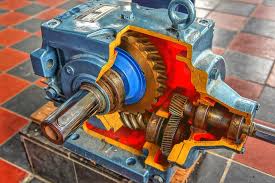Mobile:+86-311-808-126-83
Email:info@ydcastings.com
English
4g64 exhaust manifold
Understanding the 4G64 Exhaust Manifold Importance and Maintenance
The 4G64 engine, part of Mitsubishi's 4G family, has gained popularity for its robust performance and reliability. An integral component of this engine is the exhaust manifold, which plays a crucial role in the overall efficiency and function of the engine. Understanding the design, function, and maintenance of the 4G64 exhaust manifold is essential for automotive enthusiasts and those seeking to optimize their vehicle performance.
What is the Exhaust Manifold?
The exhaust manifold is a critical component of internal combustion engines, responsible for collecting exhaust gases from multiple cylinders and directing them into a single outlet, usually connected to the exhaust system. In the case of the 4G64 engine, the manifold is designed to handle the specific flow characteristics and temperature ranges associated with its operation.
Design and Function
The 4G64 exhaust manifold is typically made from cast iron or performance-oriented materials such as stainless steel, designed to withstand high temperatures and resist corrosion. The manifold is intricately designed with a series of tubes that match the cylinder layout, allowing for efficient gas flow while minimizing back pressure. This is crucial for maximizing engine performance, as back pressure can lead to reduced power output and increased fuel consumption.
An efficient exhaust manifold helps improve throttle response and enhances turbocharger effectiveness, particularly in turbocharged variants of the 4G64 engine. It also plays a role in controlling emissions, as a well-functioning manifold can help facilitate the proper functioning of catalytic converters, which reduce harmful gases before they exit the vehicle’s exhaust system.
4g64 exhaust manifold

Importance of Maintenance
Like any other engine component, the exhaust manifold requires regular maintenance to ensure longevity and optimal performance. One common issue with exhaust manifolds is cracking due to thermal stress. High heat can cause the material to weaken over time, leading to exhaust leaks that can negatively impact performance and fuel efficiency.
Regular inspection is advisable. Look for visible cracks, leaks, or signs of corrosion. Additionally, ensuring that the manifold is properly bolted and that the gaskets are in good condition is essential. Replacing worn gaskets can prevent leaks, which can lead to a decrease in engine performance and increase harmful emissions.
For performance enthusiasts, upgrading the exhaust manifold can yield significant benefits. Aftermarket options are often designed to improve airflow, reduce weight, and enhance the overall aesthetic of the engine bay. A performance manifold can lead to higher horsepower and torque, making it an appealing option for those seeking to boost their vehicle's capabilities.
Conclusion
The 4G64 exhaust manifold is a vital component that significantly influences engine performance, efficiency, and emissions. Understanding its design and function can help owners appreciate the engineering behind their vehicle while emphasizing the importance of maintenance and upgrades. By taking proactive steps to care for the exhaust manifold, drivers can ensure that their 4G64 engines continue to deliver power and reliability for years to come. Whether for daily driving or performance applications, attention to this integral part of the engine can make a notable difference in overall vehicle performance.
-
Materials Used in Manufacturing Cap End Pipe FittingsNewsNov.24,2025
-
Material Properties of CF8M CastingNewsNov.24,2025
-
How to Inspect Pump Cap Ends for DamageNewsNov.21,2025
-
Backward Curved Impeller – Efficient Airflow Solutions for Industry | YD CastingsNewsNov.21,2025
-
Automobile Water Pump - Efficient, Quiet, Durable & ElectricNewsNov.21,2025
-
Impeller for Pumps – High-Efficiency, Durable, OEM-ReadyNewsNov.21,2025











